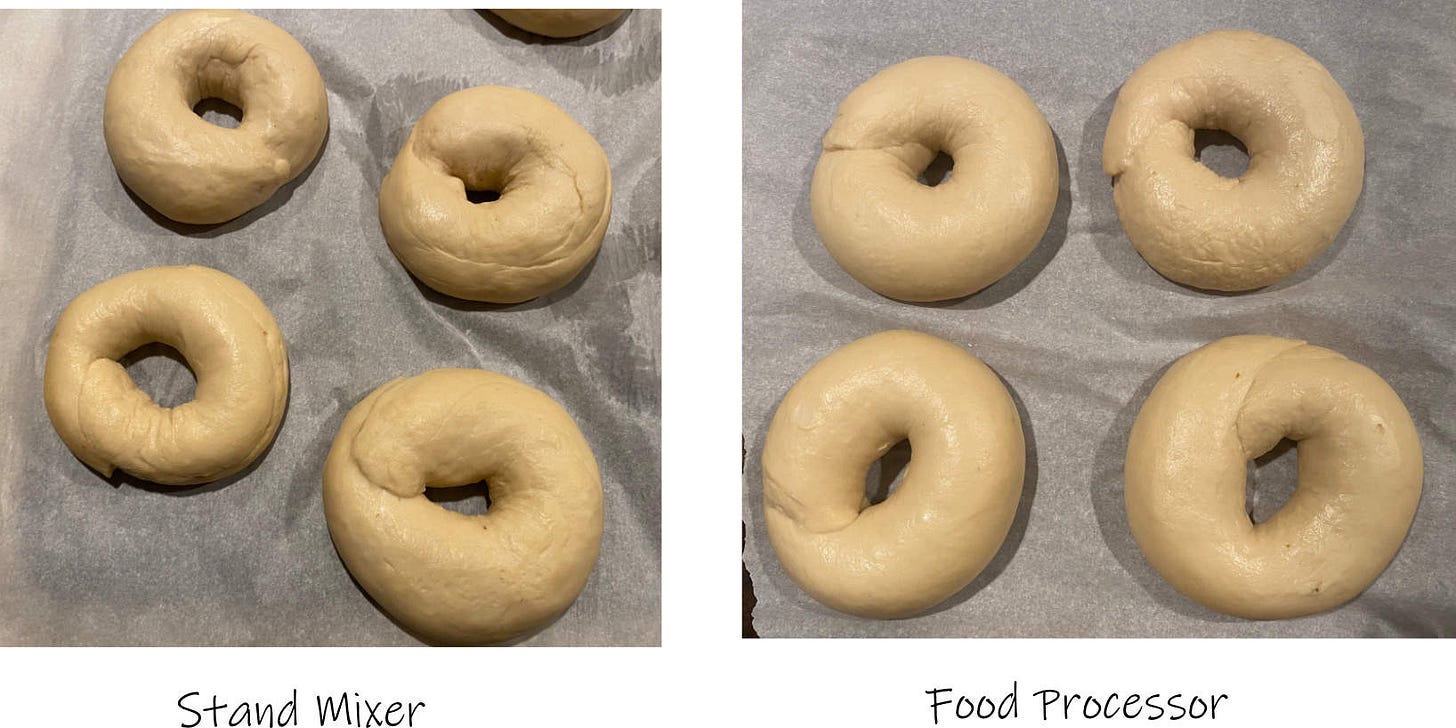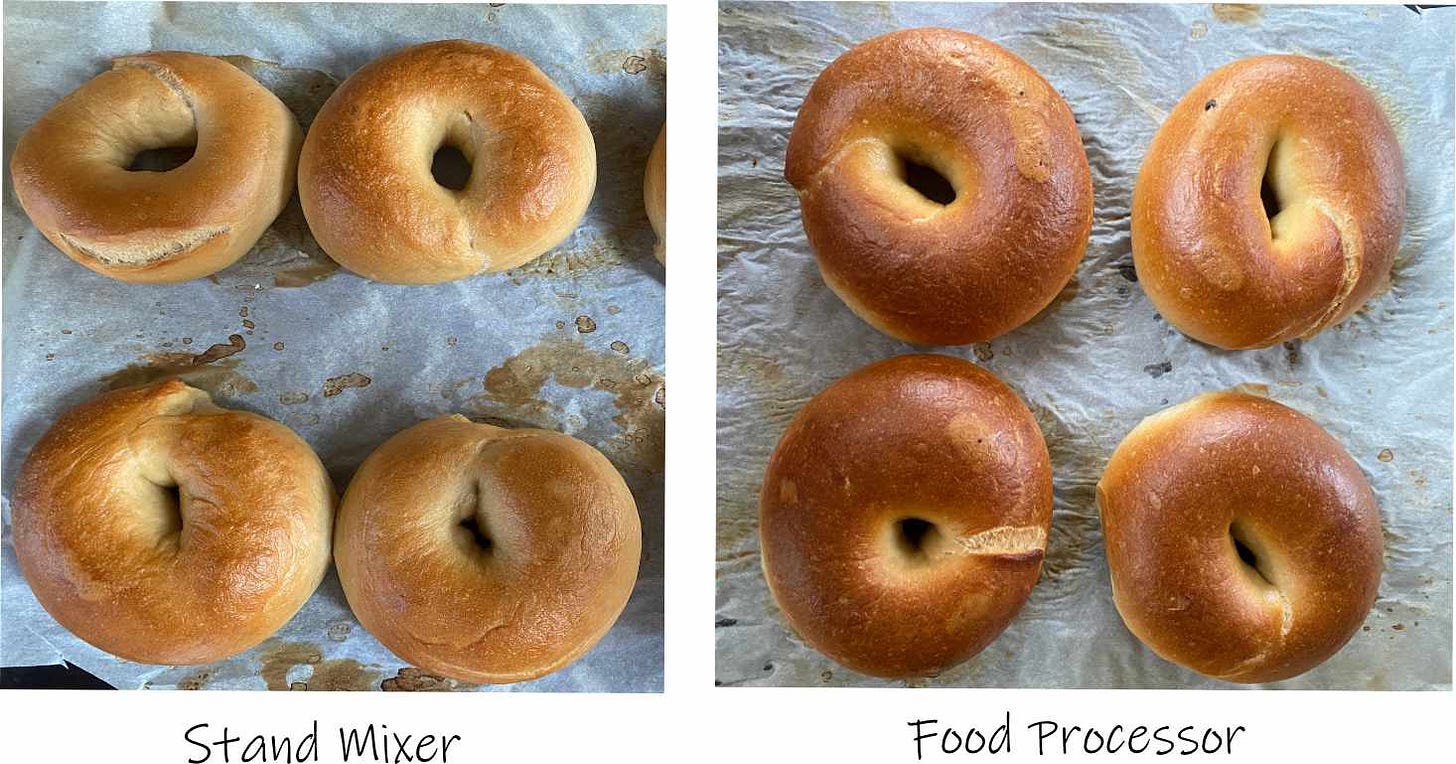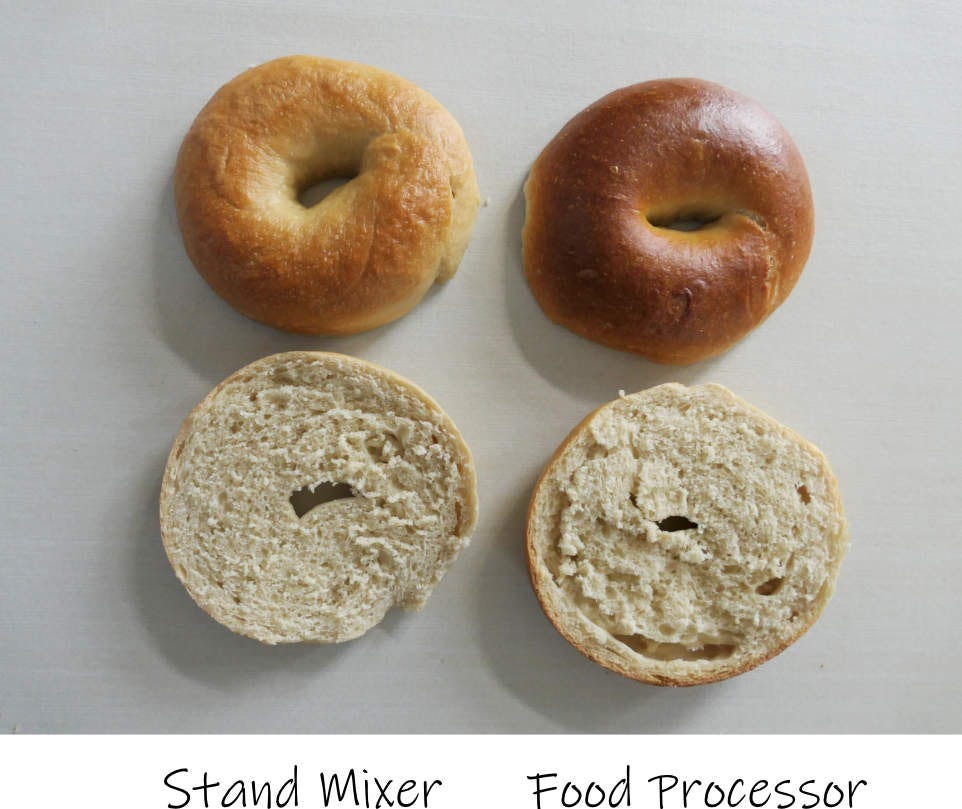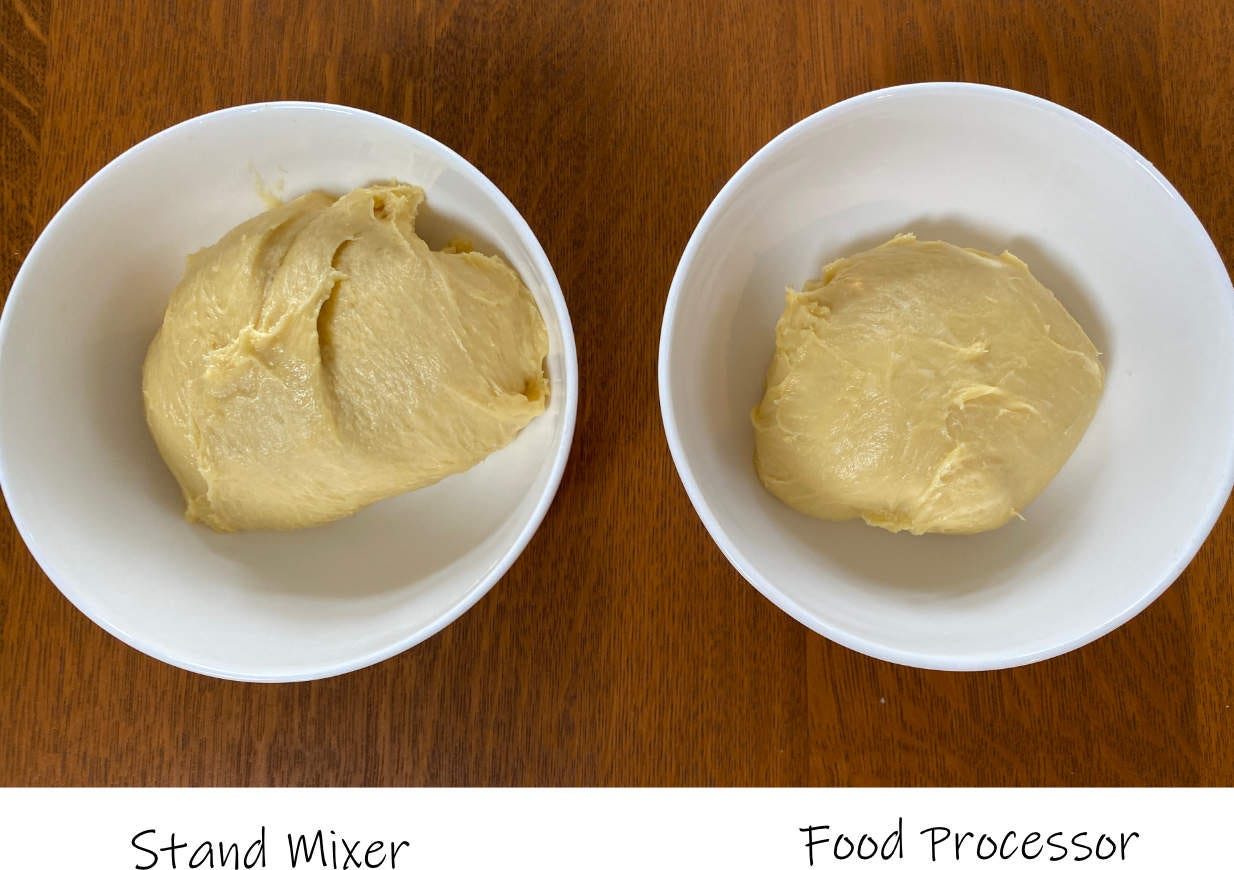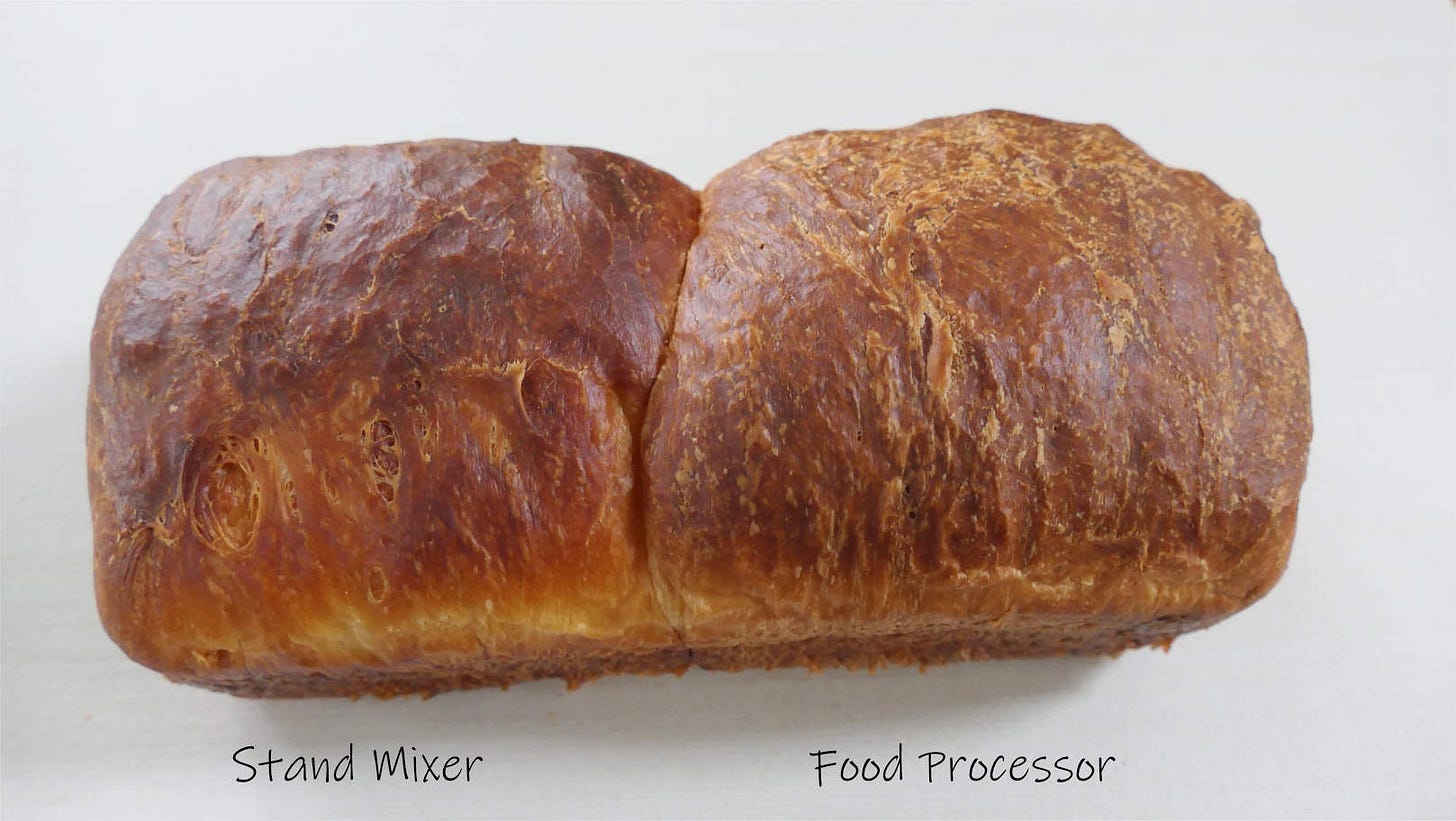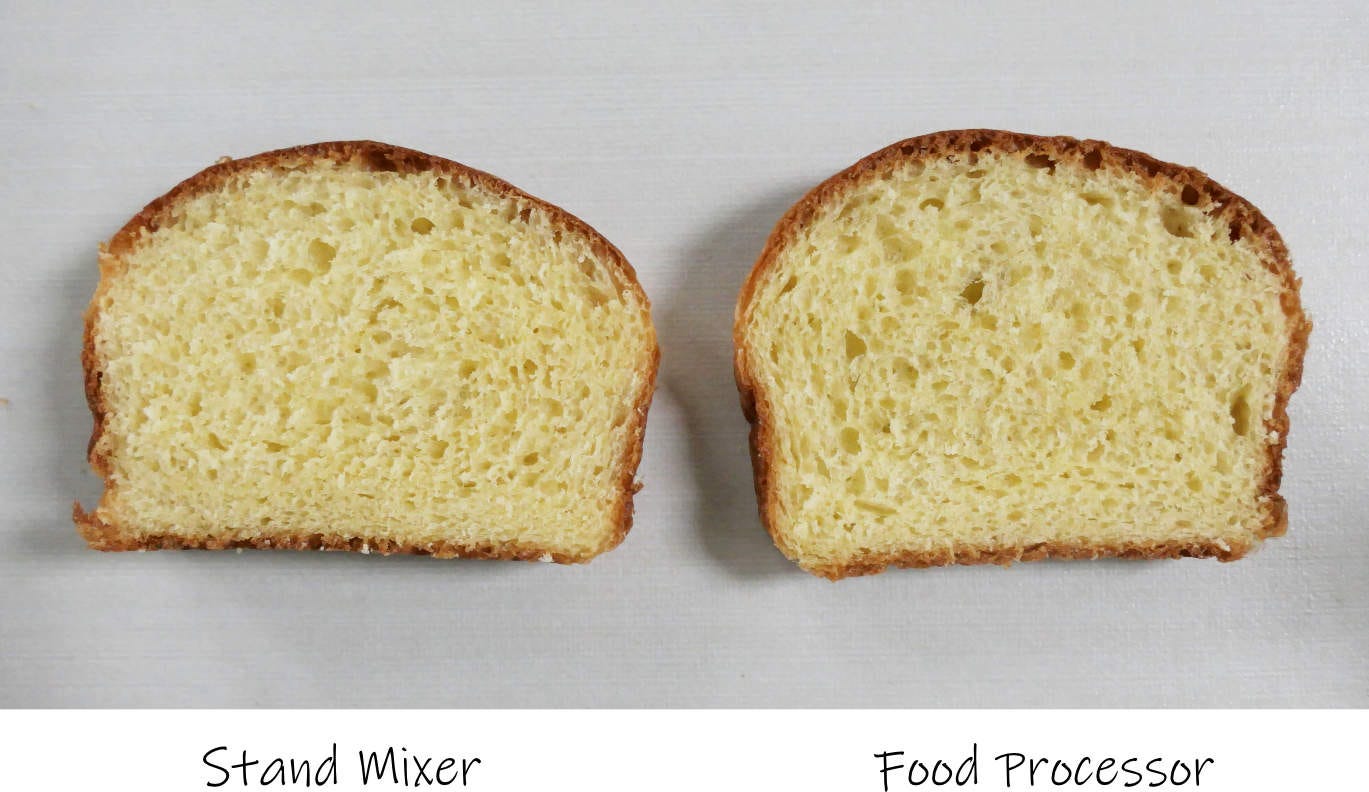This week I’m doing a little equipment testing. In this case, with baking, there is no such thing as a bad experiment.
I remember my mom frequently used a food processor to chop vegetables and get dinner on the table in record speed. I can’t remember the last time I used one, so I was surprised to see two cookbooks recommend using a food processor, instead of a stand mixer, to develop gluten networks in baked goods at home.
From my experience, stand mixers are fantastic for building gluten in high hydration “wet” doughs like pizza dough or sourdough bread, but sometimes low hydration “stiff” doughs are a challenge to handle. The dough clumps and spins along for the ride. Then, the mixer does a disconcerting little wobble when you increase the speed. If you’ve been there, I’m sure you know what I mean.
To test out this surprising cookbook advice, I did two trials, comparing bagels and brioche mixed with a food processor versus a stand mixer.
Trial #1: Sourdough Bagels
The first tip to use a food processor came from ‘Very Good Bread’ by Melissa Weller. The book has a 3-page “Guide to Successful Bagel Making” which recommends mixing the ingredients in a stand mixer with metal blade and then doing the final gluten development in a food processor. To do so, the dough is divided into four smaller pieces. Each piece is mixed in the food processor for 30 seconds, rested, and then processed again three more times. Then, all of the pieces are combined together before rolling and shaping.
The method was a little tedious, but the food processor easily handled the dough without it sticking to the bowl. The food processor bagels appeared to have a smoother surface with less imperfections than those made in the stand mixer. I also found the dough to be a little more extensible and softer.
After boiling and baking, both sets of bagels turned out fantastic—better than some of our busy local bagel shops and leagues better than the grocery store.
The food processor bagels had improved rise and smoother, perfect exterior even though I overbaked them (reminder to always set a timer when baking at 7am and chasing a toddler). I didn’t notice much difference on the internal texture, but both were perfectly chewy without being bready.
The bagel trial winner was the food processor, mostly because it had a perfect appearance. No matter what equipment you use, I have to agree with the Melissa Weller that making bagels is fun and worth the effort.
Trial #2: Brioche
The second tip to use a food processor came from ‘Sift,’ by Nicola Lamb. This first part of this book is packed with baking science and useful recommendations including technical details about kitchen equipment. Lamb shares that one of the best kitchen tricks is to make brioche or enriched dough in the food processor (1,700 RPM speed) to develop gluten much faster than a stand mixer (200 RPM speed). Unfortunately, there wasn’t much information on how exactly to mix the brioche dough in the food processor, so I started with the same technique as the bagels above.
This time, the food processor struggled to mix the much stickier high hydration dough. I processed the dough with short 2-5 second bursts and scraped down the bowl and blade frequently. At one point, the dough got entangled inside the blade housing, so I had to do a deep clean midway through the process. The food processor brioche dough seemed a little shinier than the stand mixer, but otherwise I didn’t notice much difference in the texture or extensibility.
After baking both doughs in a single loaf pan, I found that the food processor brioche rose a little more but had more imperfections in the crust. I couldn’t see a major difference in the crumb texture. Both were delicious the same day and toasted later.
The brioche trial winner was the stand mixer because it was less messy, and results were similar to the food processor batch. Side note: this was an excellent brioche recipe that I will be making again soon!
For all the kitchen minimalists and stand mixer aficionados, feel free to keep those mixers whirling, even though they might struggle with low hydration doughs. However, if you are making bagels to impress, it’s worth pulling out the food processor.



